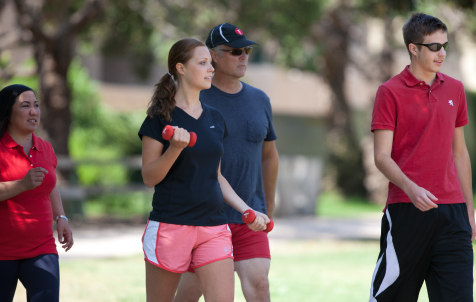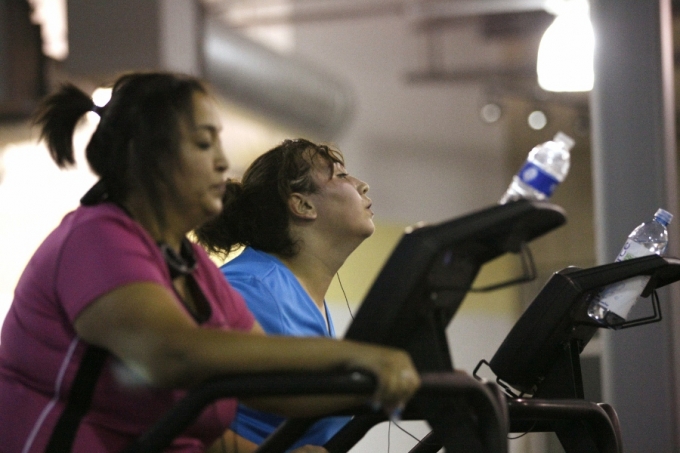Exercising each day can help keep the doctor away.
In a new study reported in the American Heart Association journal Circulation: Heart Failure, researchers say more than an hour of moderate or half an hour of vigorous exercise per day may lower your risk of heart failure by 46 percent.
Heart failure is a common, disabling disease that accounts for about 2 percent of total healthcare costs in industrialized countries. Risk of death within five years of diagnosis is 30 percent to 50 percent, researchers said.
Swedish researchers studied 39,805 people 20-90 years old who didn’t have heart failure when the study began in 1997. Researchers assessed their total- and leisure time activity at the beginning of the study and followed them to see how this was related to their subsequent risk of developing heart failure. They found that the more active a person, the lower their risk for heart failure.
They also found:
The group with the highest leisure time activity (more than one hour of moderate or half an hour of vigorous physical activity a day) had a 46 percent lower risk of developing heart failure.
Physical activity was equally beneficial for men and women.
Those who developed heart failure were older, male, had lower levels of education, a higher body mass index and waist-hip ratio, and a history of heart attack, diabetes, high blood pressure and high cholesterol.
“You do not need to run a marathon to gain the benefits of physical activity — even quite low levels of activity can give you positive effects,” said Kasper Andersen, M.D., Ph.D., study co-author and researcher at the Uppsala University in Uppsala, Sweden. “Physical activity lowers many heart disease risk factors, which in turn lowers the risk of developing heart failure as well as other heart diseases.”
Study participants completed questionnaires that included information about lifestyle, physical activity, smoking and alcohol habits, and medication use. Researchers looked at total physical activity, which included job-related activities, and leisure activities. Participants’ self-reported leisure physical activity was divided further into three categories: light, such as casual walking; moderate, such as jogging or swimming; and heavy, such as competitive sports. Diagnoses, hospitalizations and deaths were verified using participants’ medical records.
“The Western world promotes a sedentary lifestyle,” Andersen said. “There are often no healthy alternative forms of transportation; in many buildings it is hard to find the stairs; and at home television and computers encourage sedentary behavior.
“Making it easier and safer to walk, bicycle or take the stairs could make a big difference. Our research suggests that everyone could benefit from getting out there and moving every day.”
Although the relationship between heart failure and exercise has not been broadly studied, the study’s findings reaffirm the importance of continued physical activity for all adults and support the American Heart Association’s recommendations of 150 minutes of moderately intense physical activity every week. For those who need to lower their blood pressure and cholesterol the association recommends 40 minutes 3-4 times per week.
In the United States, heart disease, a major risk factor for heart failure, remains the leading cause of death, claiming 380,000 lives every year. An estimated 5.7 million Americans have congestive heart failure and about half die within five years of their diagnosis.
Source: science daily



